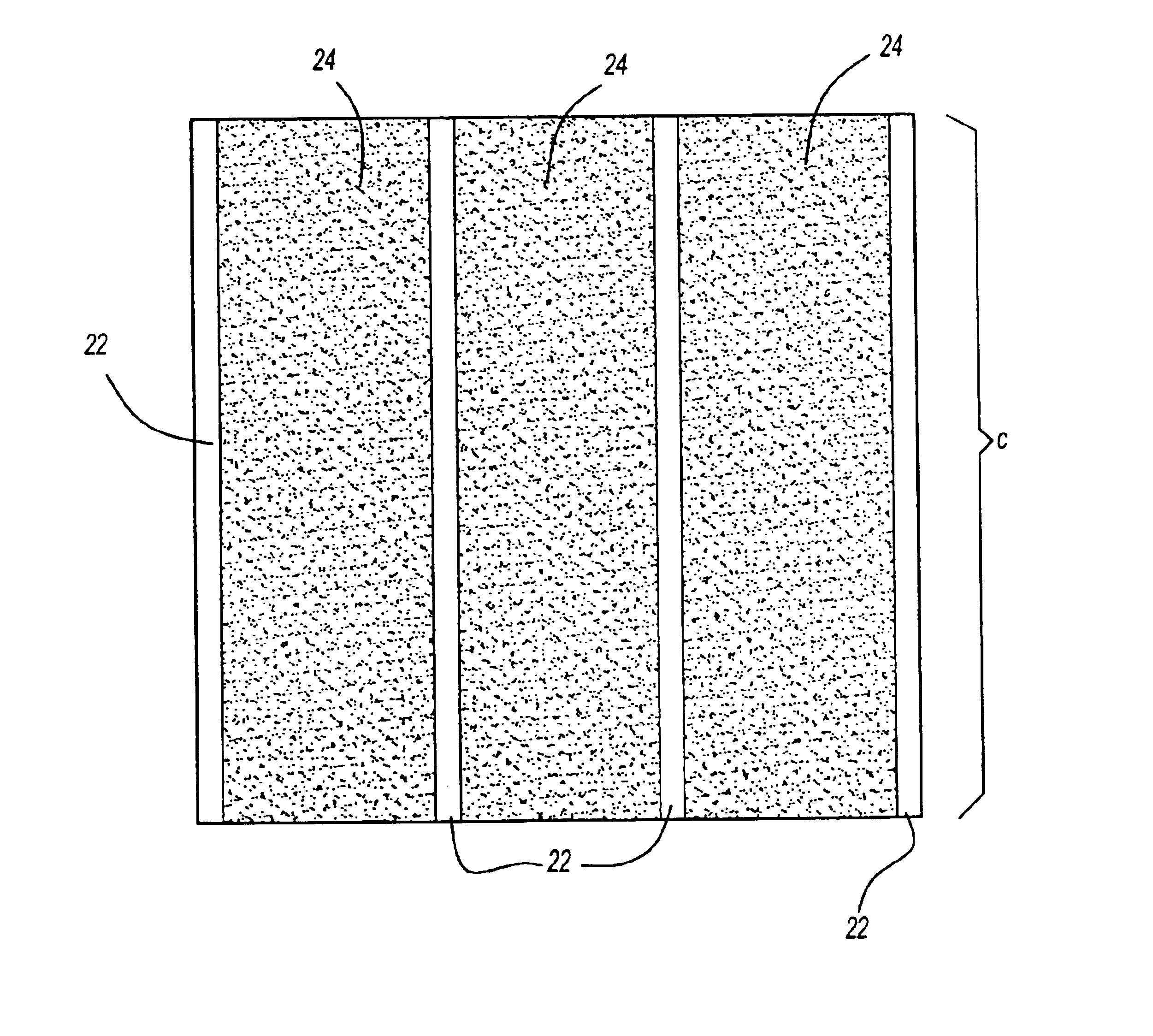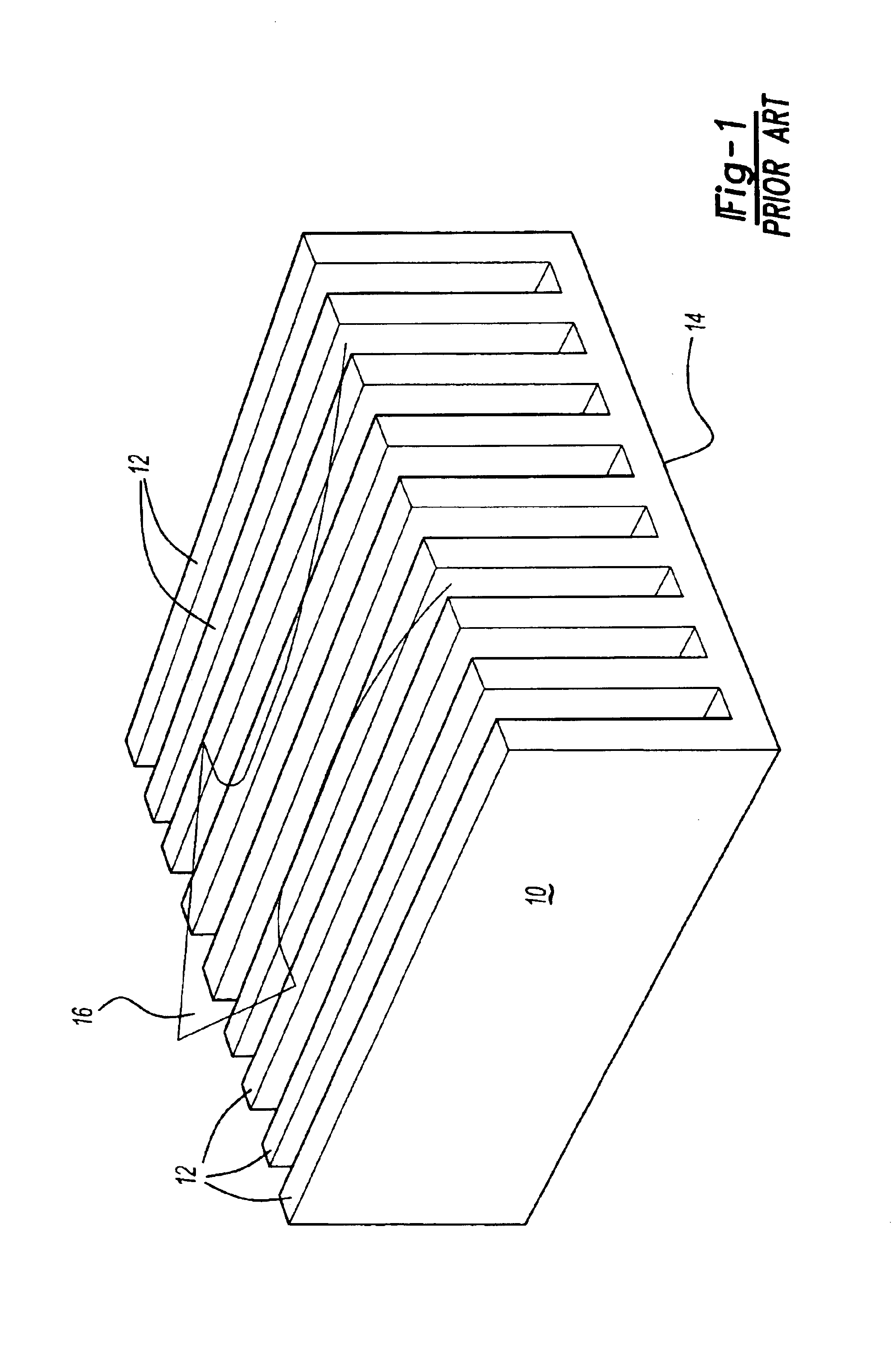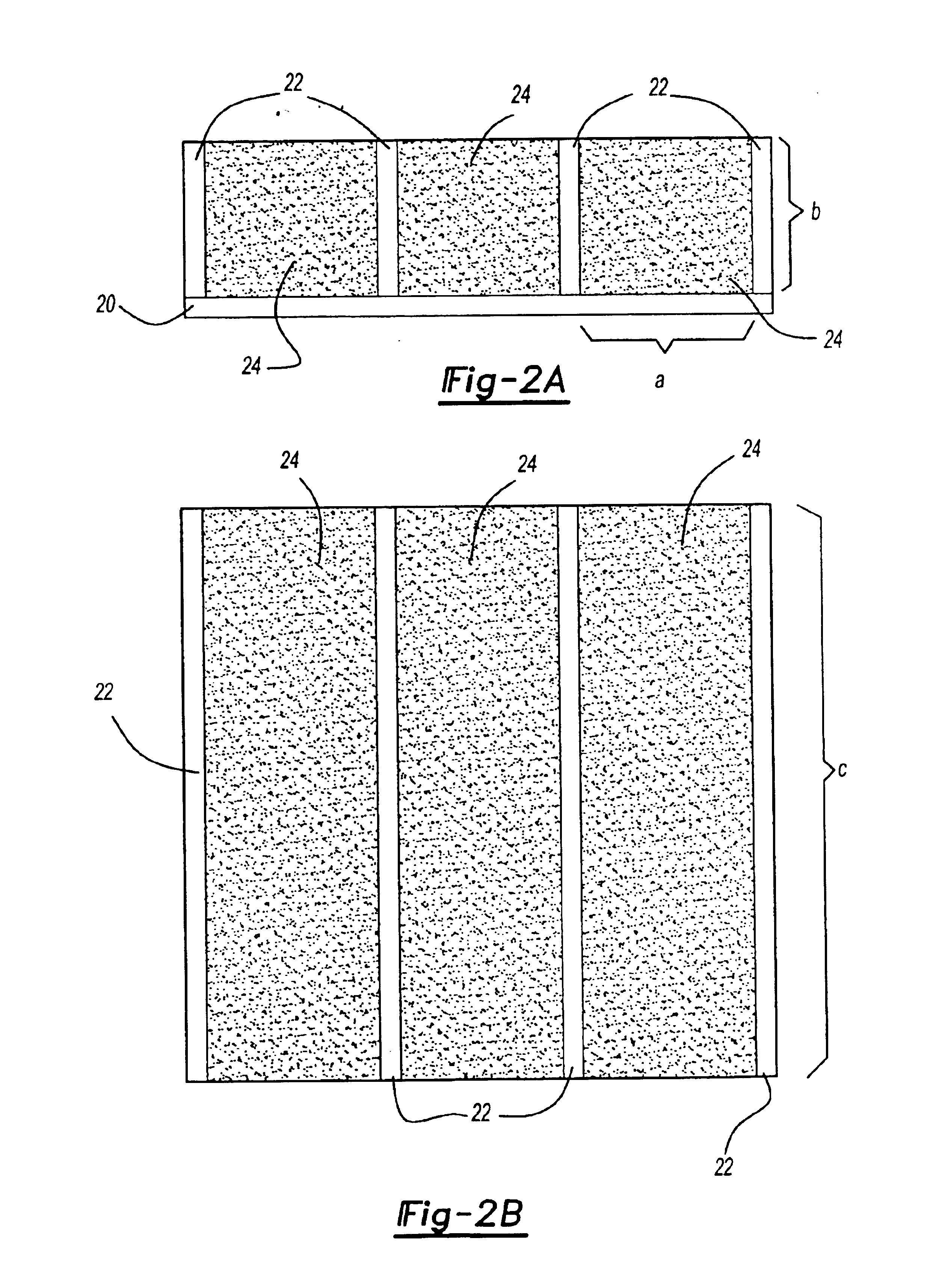High performance heat exchange assembly
- Summary
- Abstract
- Description
- Claims
- Application Information
AI Technical Summary
Benefits of technology
Problems solved by technology
Method used
Image
Examples
example 1
In a heat sink of the present invention, aluminum fins are selected having a thickness δf=0.125 inch (0.0104 ft) with thermal conductivity kf=133 Btu / ft hr° F. (0.0369 Btu / ft s ° F.). The fin length c in the flow direction, dictated by the packaging and heat dissipation consideration, is 4 inches (0.3333 ft). A commercially available open cell aluminum foam with linear density of n=20 pores per inch (240 pores / ft) and a porosity φ=0.90 is also selected. The cooling medium is ambient air flowing with a mean velocity um=10 ft / s. The transport properties of the ambient air are as follows:Density ρ=0.0749 lbm / ft3 Thermal conductivity k=0.0000041 Btu / ft s ° F.Isobaric specific heat cp=0.2410 Btu / lbm° F.Dynamic viscosity μ=0.0000123 lbm / ft s
To determine optimum fin height b, the convective heat transfer coefficient h is first determined using Equation (2), above, providing h=0.0313 Btu / ft2s ° F. Next, introducing this value of h into Equation (1), above, we obtain the optimum fin height b...
example 2
This example is the same as Example 1 except that the fin material has been changed from aluminum to copper. The copper fins have a thickness δf=0.125 inch (0.0104 ft) and thermal conductivity kf=226 Btu / ft hr ° F. (0.0628 Btu / ft s ° F.). The fin length c in the flow direction, dictated by the packaging and heat dissipation consideration, is 4 inches (0.3333 ft). The reticulated foam is a commercially available open cell aluminum foam having a linear density n=20 pores per inch (240 pores / ft) and a porosity φ=0.90. The cooling medium is ambient air flowing with a mean velocity um=10 ft / s. The transport properties of the ambient air are as follows.Density ρ=0.0749 lbm / ft3 Thermal conductivity k=0.0000041 Btu / ft s ° F.Isobaric specific heat cp=0.2410 Btu / lbm° F.Dynamic viscosity μ=0.0000123 lbm / ft s
As in Example 1, using Equation (2), the convective heat transfer coefficient h=0.0313 Btu / ft2 s ° F. Then, using Equation (1), we obtain the optimum fin height b=0.0939 ft (1.1271 inch). T...
PUM
| Property | Measurement | Unit |
|---|---|---|
| Volume | aaaaa | aaaaa |
| Electrical conductor | aaaaa | aaaaa |
| Heat | aaaaa | aaaaa |
Abstract
Description
Claims
Application Information
 Login to View More
Login to View More - R&D
- Intellectual Property
- Life Sciences
- Materials
- Tech Scout
- Unparalleled Data Quality
- Higher Quality Content
- 60% Fewer Hallucinations
Browse by: Latest US Patents, China's latest patents, Technical Efficacy Thesaurus, Application Domain, Technology Topic, Popular Technical Reports.
© 2025 PatSnap. All rights reserved.Legal|Privacy policy|Modern Slavery Act Transparency Statement|Sitemap|About US| Contact US: help@patsnap.com



